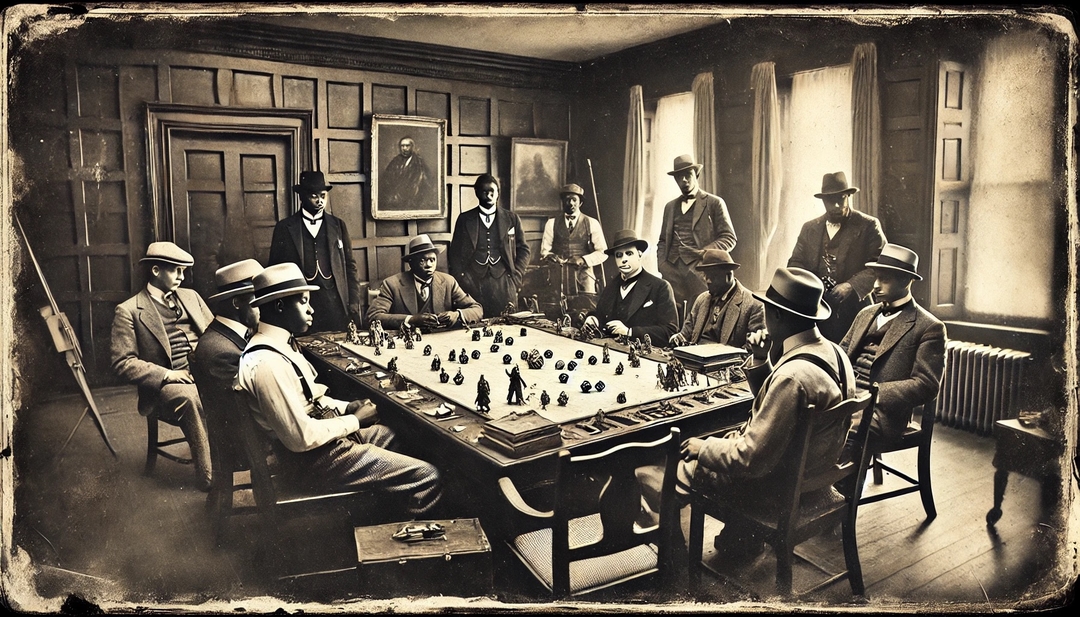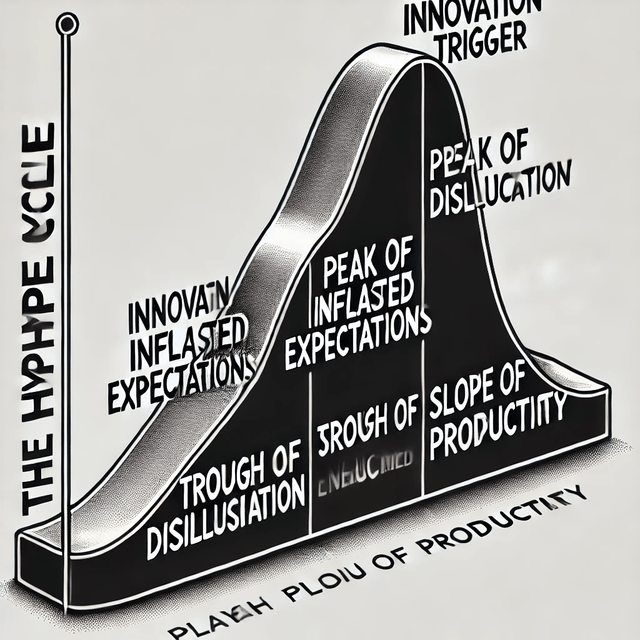Exploring the Intersection of Dungeons & Dragons and Machine Learning
- 25 Aug, 2024

Exploring the Intersection of Dungeons & Dragons and Machine Learning
The intersection of Dungeons & Dragons (D&D) and machine learning represents a fascinating convergence of traditional role-playing games and cutting-edge technology. Dungeons & Dragons, a tabletop role-playing game first published in 1974, has long been celebrated for its collaborative storytelling and imaginative gameplay. Players create characters with distinct races, backgrounds, and skills, embarking on quests overseen by a Dungeon Master (DM) who narrates the story and guides the adventure. This dynamic and interactive environment provides a unique challenge for artificial intelligence, which has traditionally excelled in structured games like chess and Go but struggles with the open-ended and creative nature of D&D.
Recent advancements in artificial intelligence have sparked interest in developing AI systems capable of participating in or even leading D&D sessions. Researchers are exploring the potential of AI to serve as a Dungeon Master, generating plots and improvising storylines in real-time. This endeavor is complex, as it requires AI to balance storytelling with player interaction, a task that involves understanding and responding to the unpredictable actions of human players. Lara Martin, a graduate from Georgia Tech, has been at the forefront of this research, combining rule-based features with machine learning algorithms to create AI that can craft consistent and engaging narratives.
Moreover, the integration of AI into D&D is not limited to narrative generation. Procedural Content Generation (PCG) techniques, which have been used in video games to create levels and environments, are being adapted for D&D. These methods leverage machine learning to generate intricate dungeon layouts and interactive elements, enhancing the gameplay experience by providing endless variations and challenges. A study from the University of Western Ontario highlights a hybrid approach to procedural dungeon generation, combining machine learning with constructive algorithms to produce high-quality, playable game levels.
The potential of AI in D&D extends beyond gameplay enhancement. AI tools can assist Dungeon Masters by automating routine tasks, generating non-player characters (NPCs), and overcoming creative blocks. Platforms like Dungeon Goblin offer AI-driven generators for characters, cities, and environments, allowing DMs to focus on crafting compelling narratives and engaging with players. Additionally, AI can make D&D more accessible by managing large-scale online campaigns and connecting players across different time zones, as noted by Live3D.
In summary, the integration of machine learning into Dungeons & Dragons is reshaping the landscape of tabletop role-playing games. By enhancing storytelling, procedural generation, and accessibility, AI is not only a tool for innovation but also a bridge connecting traditional gaming with the digital future. As AI continues to evolve, its role in D&D will likely expand, offering new opportunities for creativity and collaboration in this beloved game.
Table of Contents
Open Table of Contents
AI as a Dungeon Master in Dungeons & Dragons
The Role of AI in Enhancing Storytelling
Artificial Intelligence (AI) is revolutionizing the role of the Dungeon Master (DM) in Dungeons & Dragons (D&D) by enhancing storytelling capabilities. Traditionally, a DM is responsible for crafting the narrative, setting the scene, and guiding players through the game. With AI, these tasks can be automated or augmented, allowing for more dynamic and responsive storytelling. AI can generate plotlines, create intricate backstories for non-player characters (NPCs), and even adapt the story based on player decisions in real-time. This not only reduces the workload for human DMs but also introduces a level of unpredictability and creativity that can enrich the gaming experience. For instance, AI can quickly generate a new quest or plot twist if players deviate from the planned storyline, ensuring that the game remains engaging and immersive. (source)
Dynamic NPC Interactions
One of the most exciting applications of AI in D&D is the creation of dynamic NPC interactions. AI can generate realistic dialogue and responses for NPCs, making interactions more engaging and lifelike. This capability allows players to have meaningful conversations with NPCs, who can react to player actions and decisions in a nuanced manner. For example, an AI-powered bartender in a tavern could provide different responses based on the player’s reputation or previous interactions, creating a more personalized experience. This level of interaction can enhance the immersion of the game, making players feel as though they are truly part of a living, breathing world. (source)
AI-Generated Maps and Environments
AI is also transforming the way D&D maps and environments are created. Tools like Dungeon Alchemist and Donjon use AI to dynamically generate detailed maps, complete with terrain, lighting, and objects. This allows DMs to quickly create complex environments without needing extensive artistic skills. AI-generated maps can be tailored to fit the narrative, with features such as hidden traps or secret passages that can be revealed as the story unfolds. This not only saves time but also adds an element of surprise and discovery for players. Additionally, AI can generate entire worlds, complete with cities, dungeons, and wilderness areas, providing a rich backdrop for adventures. (source)
AI-Driven Combat and Encounters
Combat is a critical aspect of D&D, and AI can enhance this experience by managing encounters and enemy behavior. AI can analyze the party’s strengths and weaknesses to create balanced and challenging encounters. It can also control enemy actions, making them more strategic and adaptive. For example, AI can decide when an enemy should retreat, call for reinforcements, or use a special ability, based on the current state of the battle. This can lead to more dynamic and unpredictable combat scenarios, keeping players on their toes. Furthermore, AI can generate random encounters based on the environment and the party’s progress, ensuring that each session is unique and exciting. (source)
Personalized Player Experiences
AI has the potential to create personalized experiences for each player, tailoring the game to their preferences and playstyle. By analyzing player behavior and choices, AI can adjust the narrative, challenges, and rewards to suit individual players. For instance, if a player enjoys solving puzzles, the AI can introduce more complex riddles and brain-teasers. Alternatively, if a player prefers combat, the AI can increase the frequency and intensity of battles. This level of customization can enhance player engagement and satisfaction, as the game feels more tailored to their interests. Additionally, AI can track player progress and provide feedback or suggestions, helping players improve their skills and strategies. (source)
The Future of AI as a Dungeon Master
As AI technology continues to advance, its role as a Dungeon Master in D&D is likely to expand. Future AI systems could learn from player interactions and adapt their behavior accordingly, creating a more personalized and immersive experience. AI could also facilitate remote play, allowing players to participate in D&D sessions from anywhere in the world. By integrating voice recognition and natural language processing, AI could enable players to interact with the game using voice commands, further enhancing the realism and immersion of the experience. As AI becomes more sophisticated, it may even be able to create entirely new game worlds and narratives, offering players endless possibilities for exploration and adventure. (source)
In conclusion, AI is poised to revolutionize the role of the Dungeon Master in Dungeons & Dragons, offering new opportunities for creativity, engagement, and personalization. By automating and enhancing various aspects of the game, AI can help create richer, more immersive experiences for players, while also reducing the burden on human DMs. As technology continues to evolve, the potential for AI in D&D is limited only by our imagination.
Procedural Content Generation in D&D using Machine Learning
Machine Learning and Procedural Content Generation
Machine learning (ML) is like the magical spellbook of the tech world, and when it comes to procedural content generation (PCG) in Dungeons & Dragons (D&D), it’s the wizard behind the curtain. PCG refers to the algorithmic creation of game content, such as levels, quests, or characters, which is a boon for game developers who want to save time and resources while keeping players on their toes. In the realm of D&D, ML can be used to generate dungeons, quests, and even entire worlds, making each campaign as unique as a snowflake in a blizzard. This is not just about saving the Dungeon Master (DM) from pulling all-nighters; it’s about creating a dynamic and ever-evolving game world that keeps players engaged and surprised. (Semantic Scholar)
Evolutionary Algorithms and Dungeon Design
While the previous section on AI-generated maps focused on static environments, this section delves into the dynamic world of evolutionary algorithms. These algorithms mimic the process of natural selection to evolve dungeon designs over time. Imagine a dungeon that learns from its mistakes—if players find it too easy, it evolves to become more challenging, like a gym rat who just discovered protein shakes. Evolutionary algorithms can tweak dungeon layouts, enemy placements, and even the distribution of loot, ensuring that no two dungeon crawls are ever the same. This approach not only enhances replayability but also adds a layer of unpredictability that keeps players on their toes. (arXiv)
Reinforcement Learning for Quest Generation
Reinforcement learning (RL) is the secret sauce that can turn a mundane quest into an epic saga. Unlike traditional AI, which might just follow a script, RL learns from interactions with the game environment to optimize its actions. In the context of D&D, this means generating quests that adapt to player choices and actions. Picture a quest that changes its objectives based on whether the players decide to save the village or join the bandits—it’s like a choose-your-own-adventure book on steroids. RL can also be used to balance quest difficulty, ensuring that players are neither bored nor overwhelmed. This dynamic quest generation can lead to more engaging and personalized gameplay experiences. (Wired)
Natural Language Processing for NPC Dialogue
While the previous section on dynamic NPC interactions focused on AI-generated dialogue, this section explores the role of natural language processing (NLP) in creating more nuanced and believable NPCs. NLP allows NPCs to understand and respond to player input in a way that feels natural and engaging. Imagine an NPC that not only remembers your past interactions but also holds a grudge if you stole their favorite mug—it’s like having a virtual friend with a memory as sharp as a tack. NLP can also be used to generate complex dialogue trees, allowing for more meaningful and branching conversations. This can lead to richer storytelling and a more immersive game world. (ACL Anthology)
Generative Adversarial Networks for World Building
Generative adversarial networks (GANs) are like the Dr. Frankenstein of the AI world, capable of creating entire game worlds from scratch. In D&D, GANs can be used to generate landscapes, cities, and even entire continents, complete with their own histories and cultures. It’s like having a world-building assistant who never sleeps and always has fresh ideas. GANs work by pitting two neural networks against each other—one generates content, while the other evaluates it—resulting in high-quality and diverse outputs. This can lead to more immersive and expansive game worlds, where players can explore new lands and uncover hidden secrets. (ACM Digital Library)
Challenges and Future Directions
While the potential of ML in D&D is as vast as a dragon’s hoard, there are still challenges to overcome. One of the main hurdles is ensuring that AI-generated content feels cohesive and meaningful, rather than a random jumble of elements. It’s like trying to bake a cake with all the right ingredients but no recipe—sometimes you end up with a masterpiece, and other times, a mess. Additionally, there’s the challenge of balancing player agency with AI-driven content, ensuring that players feel like their choices matter in the grand scheme of things. As ML technology continues to advance, the future of D&D could see even more sophisticated AI systems that can create entire campaigns, complete with intricate plots and memorable characters. (Springer)
In conclusion, the intersection of D&D and machine learning is a fertile ground for innovation, offering new ways to enhance gameplay and storytelling. Whether it’s through evolutionary algorithms, reinforcement learning, or GANs, the possibilities are as endless as a wizard’s spellbook. As AI continues to evolve, the line between human and machine creativity will blur, leading to richer and more immersive gaming experiences. So, grab your dice and get ready for a new era of D&D, where the only limit is your imagination—and maybe your Wi-Fi connection.
Enhancing D&D Gameplay with AI Tools
AI-Generated Character Creation
While previous sections have delved into AI’s role in storytelling and NPC dialogue, this section focuses on character creation. AI tools like Hotpot allow players to craft unique characters with ease. Imagine an AI that helps you design a noble elf or a cunning rogue, complete with backstories and personality traits. This not only saves time but also adds depth to the game, as players can explore characters that are as complex as a Shakespearean drama. Plus, with AI’s ability to generate character art, you can finally see what your half-orc bard looks like without resorting to stick figures.
Dynamic World Building
While AI-generated maps and environments have been discussed, this section explores the broader concept of dynamic world building. AI tools like Dungeon Alchemist can create entire worlds, from bustling cities to eerie dungeons, with just a few clicks. These tools use machine learning algorithms to generate landscapes that are not only visually stunning but also narratively coherent. Imagine a world where the terrain changes based on player actions, or where hidden paths reveal themselves as the story unfolds. It’s like having a magical map that updates in real-time, without the need for a cartographer’s degree.
AI-Driven Narrative Adaptation
While the role of AI in enhancing storytelling has been covered, this section focuses on narrative adaptation. AI can analyze player choices and adapt the storyline accordingly, ensuring that each campaign is as unique as a snowflake in a blizzard. For instance, if players decide to ally with a notorious bandit, the AI can generate new quests and plot twists that reflect this decision. This dynamic storytelling keeps players engaged, as they never know what surprises await them around the corner. It’s like having a choose-your-own-adventure book, but with infinite possibilities and no need to keep your finger on the last page.
AI-Assisted Game Management
While AI-driven combat and encounters have been explored, this section focuses on game management. AI tools like Flamel.AI can automate tedious tasks like rule-checking and score calculation, allowing Dungeon Masters to focus on the fun parts of the game. Imagine an AI that tracks initiative order, calculates damage, and even suggests strategic moves for players. This not only speeds up gameplay but also reduces the cognitive load on the DM, making it easier to manage large groups and complex scenarios. It’s like having a personal assistant who knows the rules of D&D better than you do.
Ethical Considerations in AI-Driven D&D
While the transformative power of AI in D&D has been celebrated, this section addresses the ethical considerations. As AI becomes more integrated into gameplay, questions arise about the sources of AI-generated content and the balance between automation and human creativity. For instance, should AI be allowed to create entire campaigns, or should it be limited to supporting roles? And what about the potential for AI to perpetuate biases or stereotypes in character creation and storytelling? These are important questions that require ongoing dialogue within the D&D community. After all, even in a world of dragons and magic, ethics still matter.
References
- https://www.diceanddata.com/
- https://hotpot.ai/dnd-generator
- https://litrpgreads.com/blog/rpg/chatgpt-dnd-guide-ai-dm
- https://www.ibm.com/blog/more-play-and-less-prep/
- https://www.toolify.ai/ai-news/revolutionizing-ttrpgs-exploring-ai-modules-and-virtual-tabletops-714457
- https://www.tomsguide.com/ai/alien-romulus-inspired-me-to-play-an-alien-themed-tabletop-game-and-this-ai-tool-makes-it-super-easy
- https://www.morningdough.com/ai-tools/best-ai-dnd-map-makers/
- https://lorekeeper.com/
- https://quickcreator.io/quthor_blog/profound-influence-ai-dungeon-master-dnd-gameplay-revealed/
- https://roleplayinglab.com/best-ai-writers-for-dnd/
- https://www.hyperwriteai.com/aitools/ai-dungeon-master
- https://quickcreator.io/quthor_blog/influence-ai-dungeons-dragons-gameplay-data-analysis/
- https://www.plusonetogaming.com/blog-episodes/ai-dnd-5e-starters-guide
- https://quickcreator.io/quthor_blog/ai-dnd-dungeon-master-transforms-player-experience/


